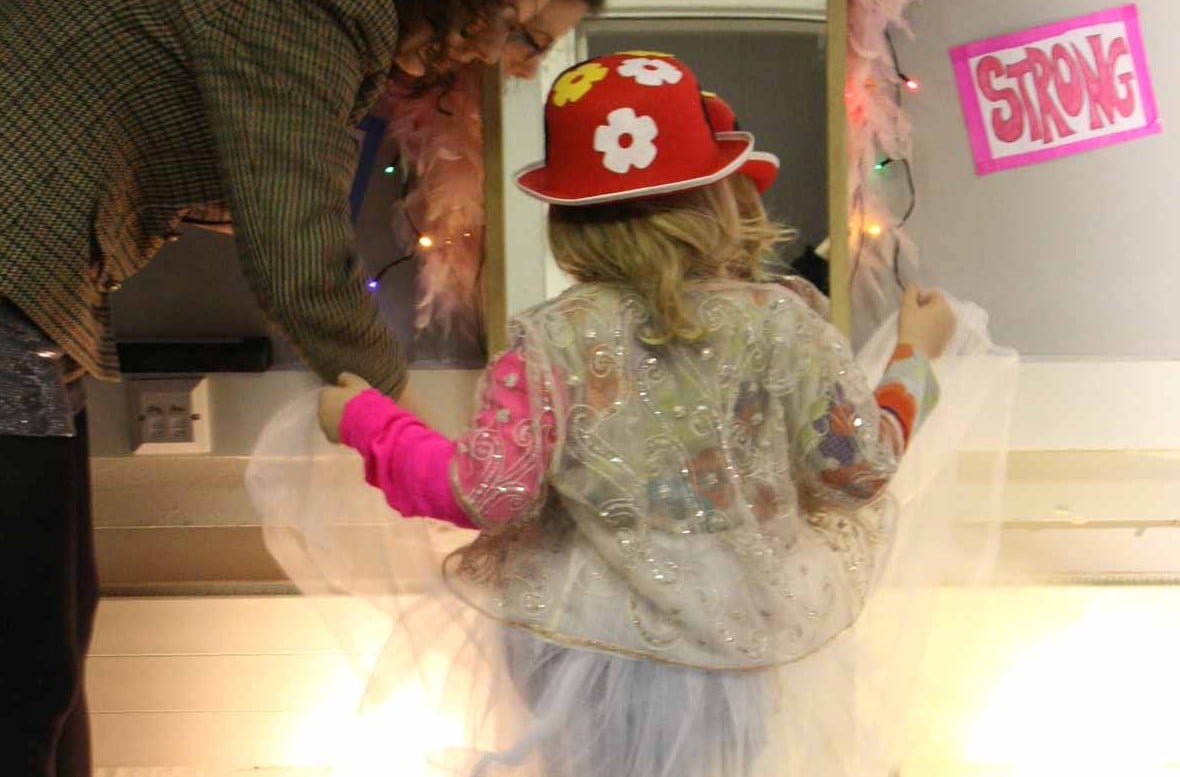
Allowed to play up
Is ‘live art’ the perfect medium for intergenerational arts projects? Liz O’Neill explains how children can help adults embrace the fun of experimental performance.
It’s a mistake in the arts to always feel like you have to be in control. It’s limiting, for individual and collective experience and for the advancement of new practices. And that applies to audiences just as much as it does for people with responsibility for entire artistic programmes.
In 2012 my own organisation, Z-arts, was faced with the dilemmas that a complete rebrand brings – asking ourselves what would we be and what would we be known for. Opportunities lay ahead, but also great potential to make terminal errors, as we chased a vision for a contemporary, family-specific venue.
Adults, in all walks of life, are programmed to be rational, but sometimes it helps to unlearn what we think we know
With a now-or-never mindset, and a mischievous sense of wanting to challenge perception, one of the things we did was to partner with hÅb/Word of Warning to produce Haphazard, a free day of ‘live art’ programmed to bring artists, adults, young people and children together. We invited artists and audiences to join a discussion and two key points were made.
First, we found that some adults had allowed themselves to enjoy experimental performances more because they were with children. It was the younger audience members who had simply embraced what they were seeing, without considering it strange, embarrassing or even art.
Adults, by virtue of being in the company of children, also shared a perceived permission to dispense with a need to read the work and just got lost in the fun of it all.
Second, the artists were able to respond to a new audience, which helped them see their own work in a new light.
Lois Keidan, from the Live Art Development Agency (LADA), says: “Live art is a way of thinking about what art can be, how and where it can be made, who it can be made by and for, and what it can be made about. As such, it is a research lab for our culture.” That perspective, as an artist or as someone supporting artists to make new and challenging work, should be an intoxicating prospect.
LADA and Sibylle Peters from the Theatre of Research in Germany hold an admirable line when it comes to best practice in the research and development of work that engages both adults and children. It sounds simple, but is challenging in reality: to make both adults and children integral in the development and enjoyment of new work.
In suggesting a solution to the challenge, we return to our theme of loosening our traditional senses of control, giving children and young people an equal role.
Adults, in all walks of life, are programmed to be rational, but sometimes it helps to unlearn what we think we know. Tamsin Drury from Word of Warning recalls one Haphazard performance, saying: “We showed a piece that was rooted in Dadaism. Various analogies could be drawn from an art history perspective, but in its simplest reading, it was three people with coloured buckets on their heads walking endlessly in patterns. It completely mesmerised the smaller members of the audience.”
Doesn’t this also apply, as an analogy, to the way organisations tend to work? Sometimes we are struggling to find the people or influence that can support artists eager to test ideas with coloured buckets on their heads. It isn’t a question of one or the other, of silly or serious, but of deciding who is best to decide.
It can sometimes be an easy choice to work with people who have endless years of experience in their chosen field, but do those years of learned habits, assumptions and principles really liberate us? The answer perhaps is that we should decide together with those we aim to please and return to the well-worn adage that without risk there can be no reward.
With all this in mind, it’s so pleasing to see Playing Up being launched at Tate Modern, an intergenerational three-day ‘play-in’, followed by a symposium to discuss intergenerational live art.
It is important that it takes place now – to bring to the heart of the UK arts industry what Theatre of Research, Live Art DK in Denmark and, to some degree our Haphazard artists and audiences, have come to understand.
Among the differences in approach, Sibylle Peters notes the stark distinctions in positive funding decisions and principles of arts education in Germany as the UK struggles to keep a progressive pace. Yet it is the ‘unedited’, direct feedback of children and their stronger sense of possibility she sees as major benefits in sharing arts experience with children.
As she puts it: “Kids are explorers of the everyday. For them to light a match can be something extraordinary that needs focus and time and creates an experience. The same is true for everyone who practises live art. For us, kids are perfect accomplices and, in return, live art can provide something that is essential to all of us.”
For Tamsin and me, watching grown-ups lose themselves in live art as a result of the company they keep, rather than inhibited by their sense of inner seriousness, gave us great encouragement to continue with Haphazard. But as a sector, we should be encouraged to take the next step and count intergenerational practice – from start to finish and top to bottom – as essential to our futures. The Playing Up event and symposium feel like a landmark step in doing so.
Liz O’Neill is Artistic Director of Z-arts.
www.zarts.org
Playing Up is to be held on 1 to 4 April at Tate Modern, London.
Join the Discussion
You must be logged in to post a comment.